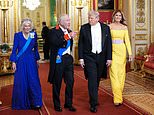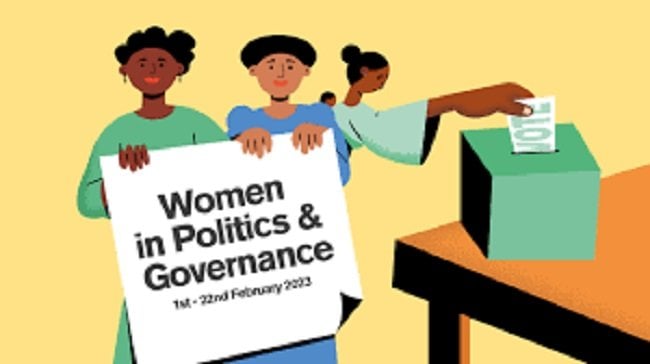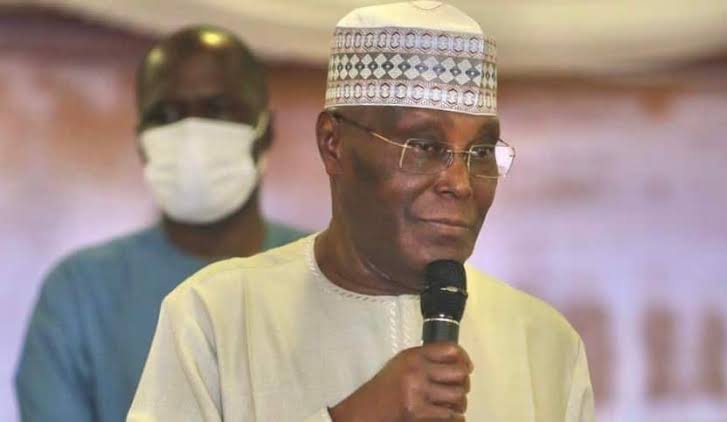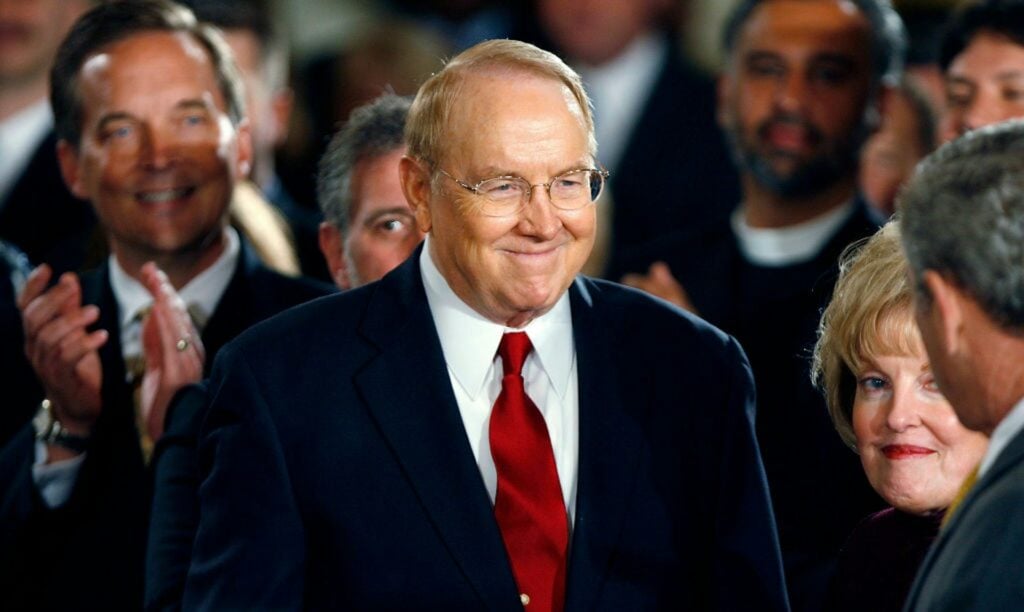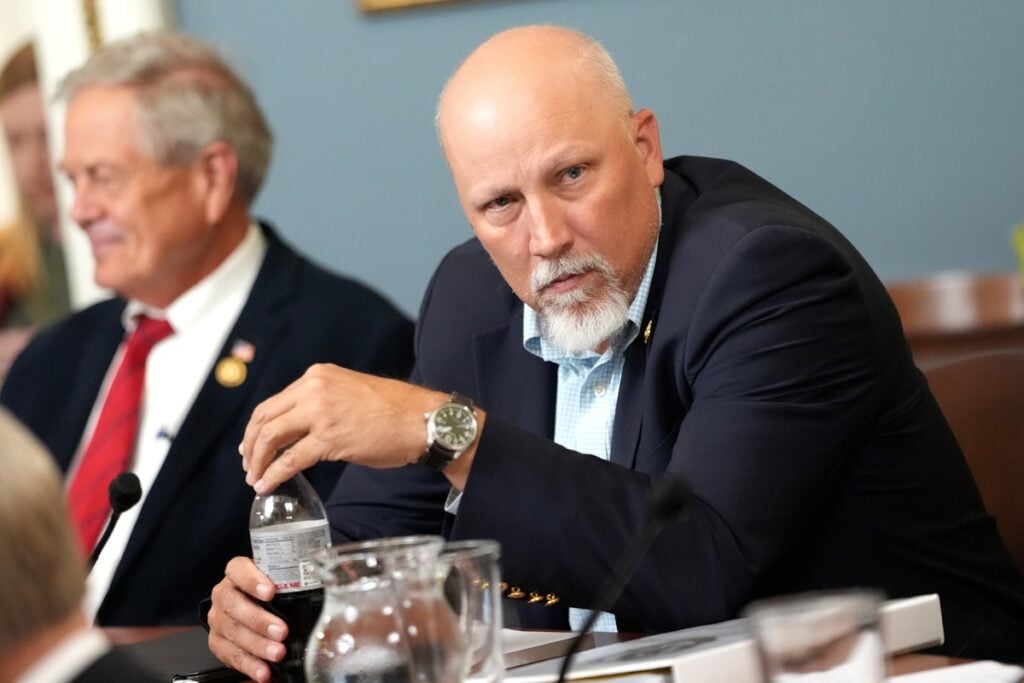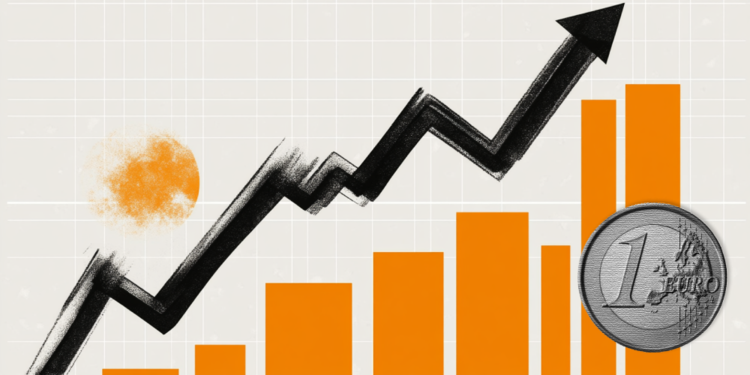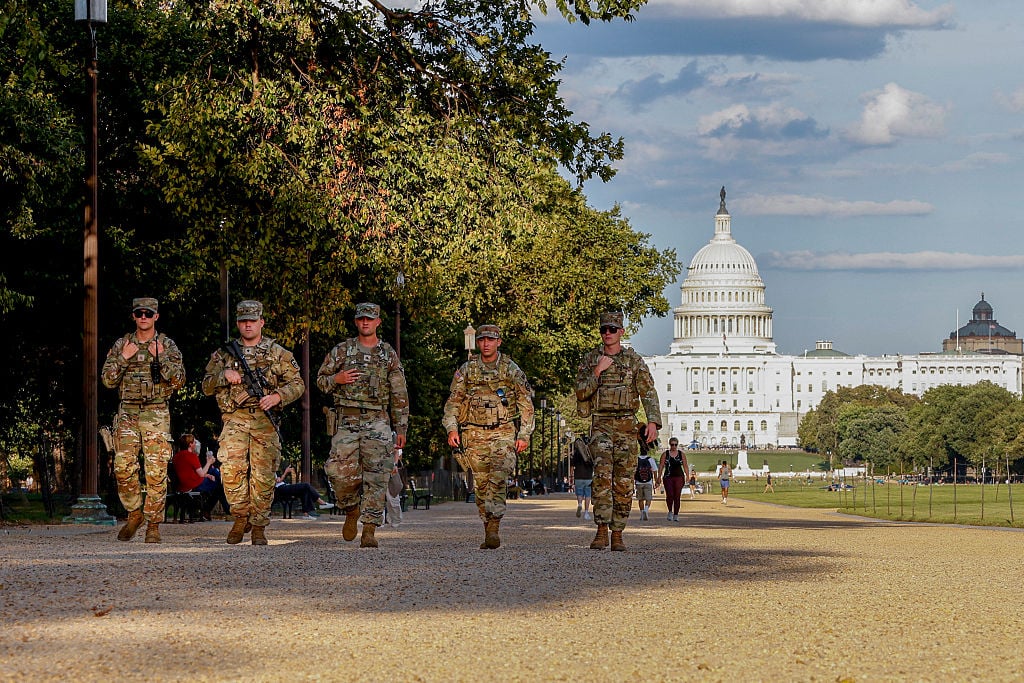Trump’s ‘trade tsunami’ unsettles geopolitics
At the time it looked like a particularly brazen example of a developing nation that traded heavily on its ties with the US, and had become the only declared “major non-Nato ally” of Washington on the African continent in 2024 largely as a result of its declared support for Ukraine.
Kenya faces a review in the US Senate of whether it deserves to retain the position given its ties with Iran and China in particular.
With Kenyan newspapers reporting an imminent trade deal with Beijing with zero apparent trade barriers, as Trump imposes 10% tariffs on Kenya, Ruto implied there was little choice which side to pick.
“I have a bit of a problem with some of our friends,” Ruto told an investment event in Nairobi this week, citing worries about the closer relations with Beijing.
“But it’s what I must do for Kenya.”
Trump’s administration sees its embrace of tariffs as key to its approach to the wider world, including matters of war and peace including Russia and Ukraine, China and Taiwan and efforts to stem cross-border drug flows from Mexico and Canada.
For many nations in the Global South, what Indian newspapers have called a “trade tsunami” have come as a dramatic shock to countries that have long been used to walking an awkward path between foreign power blocs.
In some cases, as with Kenya, that may simply have accelerated shifts under way. In others, such as India, the world’s most populous democracy and fifth largest economy, it risks reversing decades of gradually built improvements in relations with successive US administrations.
It is a dynamic that reached a particular height this month, with Trump’s administration unveiling its latest tariffs on every nation in the world as Trump threatened to impose further trade costs on Russia’s trading partners, particularly India and China, if there was no ceasefire in Ukraine soon.
The 10% US import tax imposed on Kenyan goods is one of the lower rates. Brazil and India may grapple with tariffs up to 10 times that, with dozens of other nations facing levels somewhere in between and in many cases explicitly linked to specific political objectives.
In addition to US envoy Steve Witkoff visiting Moscow, this month has seen Treasury secretary Scott Bessent and trade representative Jamieson Greer sitting down with Chinese counterparts for discussions that appear to be moving beyond a potential trade deal to much wider US-China issues.
The knock-on effects of that are being digested in Taiwan, where the US, in seeking to soothe relations with Beijing ahead of a potential meeting between Trump and Chinese President Xi Jinping later in the year, appear to have snubbed Taiwanese leaders.
According to many reports, that included cancelling a planned Washington visit for Taiwanese defence minister Wellington Koo and denying the island’s President Lai Ching-te permission to land and refuel in New York on a now-cancelled visit to Central America.
Taiwan is used to the shifting tides of US support, and is not unused to taking second place to Washington’s overtures to Beijing, not only on trade but many broader issues. However, many other nations appear to have been genuinely shocked by the way they have been targeted by Trump.
India’s foreign ministry described as “unjustified and unreasonable” comments from Trump describing Indian oil purchases as “fuelling the Russian war machine” in Ukraine.
It described the purchases as “necessary measures to safeguard national interests and economic security” and criticised the US and European nations for continuing some of their own trade with Russia.
Some Indian newspapers were considerably blunter, describing the US position as hypocrisy.
The reality is a touch more complicated, though it is true that neither the US nor European nations have gone as far as they might have in seizing Russian assets or blocking Russian trade themselves, a point repeatedly made by Ukraine.
On many occasions, Trump has described trade tariffs as one of his preferred tactics to end armed conflict and minimise further bloodshed.
When it comes to ending fighting in Ukraine and years of unrest in the Democratic Republic of Congo, he has also explicitly pursued linked mineral deals critics said may benefit the US before the host nations.
For countries that need to shape their own long-term policies to the US and other major powers, however, the second-order effects of the developments can be hard to approach clearly, and matters get worse when they are wrapped in the president’s own more personal ambitions.
Within India, for example, there remains widespread disquiet that the US was seen as siding much more with Pakistan, normally regarded as a clear ally of China, during its recent clash with India, with the government in Islamabad requesting US help to manage escalation.
Pakistan’s nomination of Trump shortly after for a Nobel Peace Prize may have won it friends in Washington, with a growing list of other nations making similar suggestions.
The fact that one of the nominations comes from Israeli Prime Minister Benjamin Netanyahu, though, who has presided over a devastating war in Gaza deeply unpopular across much of the wider world, has done little to reduce rising talk of Western and particularly US double standards.
Some other dynamics look relatively steady.
The Trump administration is unlikely to fix relations with Brazil under its government, given its anger at the treatment of former right-wing president Jair Bolsonaro, under house arrest in a move that has prompted US sanctions.
Trump’s relations with Gulf Arab states seem relatively secure, given common business interests.
However, other dynamics remain wildly unpredictable, including with Israel over future developments in Gaza.
In a sign of how fast-shifting the world has become, Myanmar’s military strongman. one of the world’s most isolated leaders, albeit supported by Moscow and Beijing, responded to Trump’s letter imposing 40% tariffs on goods from his country with a fawning letter describing his “sincere appreciation”, an apparent precursor to potential talks with Washington over rare earth minerals.
Much of the tariff-related turmoil, so far at least, has been to the benefit of Moscow and Beijing, creating ready divisions and frustration for them to exploit with trade deals and sometimes propaganda.
Whether that can remain the case for the remainder of the year, though, is a different question,— particularly as the two countries are the focus of what the US sees as arguably its most important negotiations, balancing trade and geopolitics.
If the Kremlin is genuinely not willing to move towards a ceasefire in Ukraine, and few believe it is, then it is incredibly difficult to predict the effect of US sanctions on Russia itself and even more on India and China.
In the short term, Trump’s tariff blitz might the nations all closer to each other, helping cement the sort of Russian-Chinese leadership of the Brics group of emerging economies that Moscow and Beijing have long hoped they might achieve.
Without a doubt, China has made it clear it does not want to see the Kremlin lose badly in Ukraine. Particularly likely, Beijing fears an outcome in which President Vladimir Putin’s rule collapses, at worst raising speculation of a similar fate for Xi. However, the more this is tied to wider trade and other issues with the US and beyond, the more complex the calculus.
Even more importantly, Beijing must also make its own decision on what deal it wants to strike if any, and again, how that affects its other strategic priorities particularly Taiwan.
If an agreement can be reached, the Trump administration is giving the impression it might pull back on support to the Taipei government, perhaps including weapons sales.
Simultaneously, Moscow and Beijing will be looking at the US Pentagon strategic posture review due to be published in the autumn for direction on worldwide US military deployments. The two countries will be hoping Washington pulls back forces in the vicinity of their borders, but the rougher relations are when that report is published, the less likely that might be.
All of that means the second and third order effects rolling down to other nations become even less predictable. That is unsettling for major US allies, with the EU, Britain, Japan, South Korea and other major partners moving fast this summer to seal their own deals with Trump before the strategic chessboard moves again.
By the end of the year, more clarity is possible.
Either Trump will have met with Xi as a start to ongoing dialogue, or relations with Beijing will have fractured further, and similarly with Moscow things might be notably more hostile or considerably friendlier.
That would at least give the rest of the world something more solid to work with. In the meantime, expect nations caught in the middle to try to keep their options open or make a virtue of jumping early to one side or the other.
Reuters



